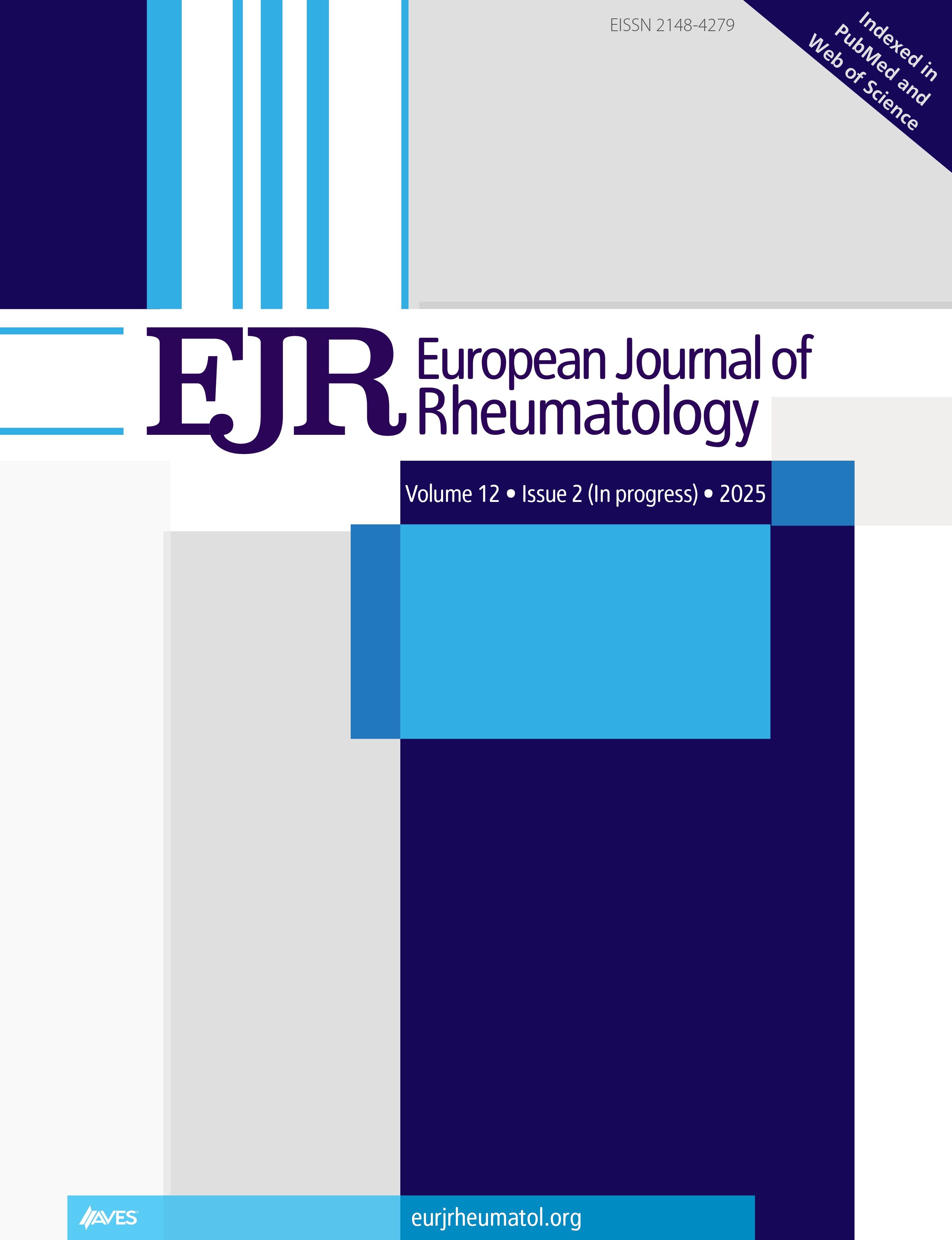Background: To examine the effect of ankylosing spondylitis (AS) on work productivity, work instability
and absenteeism, and the cost to the national economy of the disease.
Methods: This cross-sectional study included 100 AS patients from the outpatient rheumatology
clinic at Akdeniz University Hospital who met the 1984 modified New York criteria. Annual direct and
indirect care costs of the AS patients were recorded, along with their sociodemographic data and
clinical characteristics. Direct costs were based on reimbursements from the National Social Security
Institution, while indirect costs were estimated using the human capital approach to account for
productivity loss and absenteeism related to income, reflecting the disease’s economic impact on
work capabilities. The work-related outcomes were evaluated with the Work Productivity and Activity
Impairment-Spondyloarthropathy (WPAI-SpA) and Ankylosing Spondylitis Work Instability Scale
(AS-WIS). Pearson correlation analysis was applied to determine the relationships between quanti-
tative variables, while the Chi-square test or Fisher’s exact test was used for relationships between
qualitative variables. To assess the effects of independent variables on work productivity impairment,
activity, and work instability, multivariate linear and logistic regression methods were used.
Results: Among the 87 working AS patients, 38 (43.7%) exhibited moderate to high work instability
(AS-WIS ≥ 11). These patients had higher rates of absenteeism, presenteeism, overall work impair-
ment, daily activity impairment, and scores for Ankylosing Spondylitis Disease Activity Score-C
Reactive Protein (ASDAS-CRP), Bath Ankylosing Spodylitis Disease Activity Index (BASDAI), Bath
Ankylosing Spondylitis Functional Index (BASFI), The Ankylosing Spondylitis Quality of Life, and
PG-VAS. Ankylosing spondylitis patients had an average absence of 10.3 working days in the past
year. Their annual healthcare costs averaged €3782.76, primarily due to medication costs of €3674.89.
Among the 87 working AS patients, 10 (11%) reported productivity losses in the last year, totaling
€1059.62. The AS-WIS score showed moderate to high correlations with presenteeism, daily activity
impairment, overall work impairment, BASDAI, PG-VAS, BASFI, and ASDAS-CRP. In contrast, absentee-
ism had weak correlations with BASMI and CRP, moderate correlation with overall work impairment,
and no correlation with BASDAI and BASFI. Lateral spine mobility, quality of life, educational level,
BASFI and BASMI scores, smoking, and the work performed were predictors of work instability and
impairment in work productivity.
Conclusions: In addition to healthcare costs, the costs related to unemployment, absenteeism, and
loss of productivity constitute a significant proportion of the total costs, and it was seen that AS has a
negative effect on the economy of the country. If work instability and impairment in work productiv-
ity are identified early, the risk of work disability can be reduced or eliminated with appropriate clinical
and workplace interventions.
Cite this article as: Aydan Cenberoğlu M, Sezer I. The factors related to work productivity and disease costs in patients with ankylosing spondylitis. Eur J Rheumatol. 2025, 12(1), 0118, doi: 10.5152/eurjrheum.2025.22118.



.png)